London Design Festival reveals installations for 2015
London Design Festival 2015: David Adjaye, Alex Chinneck and Mischer'Traxler are among the designers set to create installations for this year's London Design Festival, which will include an electricity pylon turned on its head and a courtyard filled with mirrors (+ slideshow).
A number of large-scale installations by Irish firm Grafton Architects, London-based designers Matteo Fogale and Laetitia De Allegri and Mexican architect Frida Escobedo were also announced during a conference at the V&A this morning.
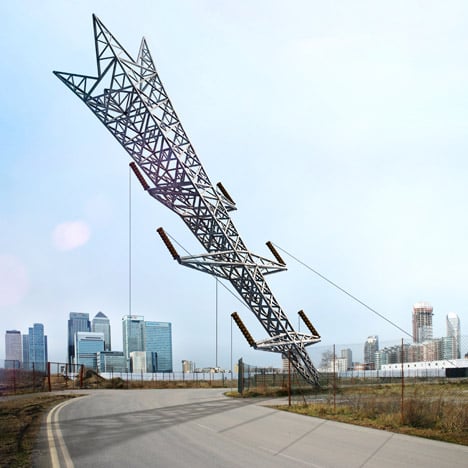
They form part of over 350 events that will be held across the capital during London Design Festival, which will run between 19-27 September.
Referencing the industrial landscape of gas and oil works of the Greenwich Peninsula, London-based artist Alex Chinneck will construct a latticed-steel replica of an electricity pylon.
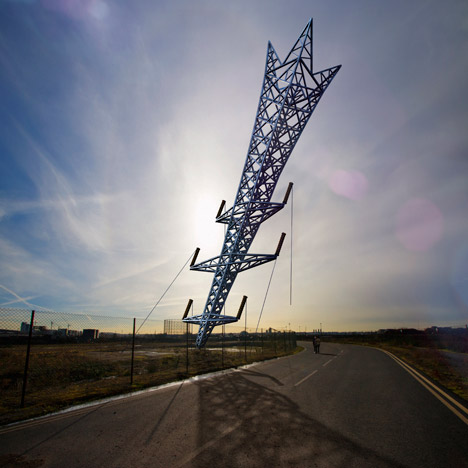
Rooted to the ground by its pointed top rather than its legs, the piece will appear as if shot into the ground. The 35-metre-tall sculpture weighing 15 tonnes will be tethered to lean at a perilous angle over an adjacent access road.
Named A Bullet from a Shooting Star, the sculpture will be illuminated, making it visible from Thames boat services, local stations and aeroplanes en route to the capital's City Airport.
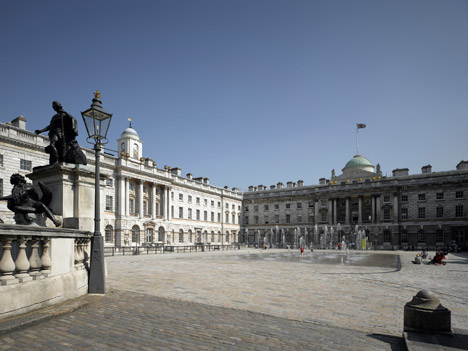
Somerset House will be used as a venue for the festival for the first time, and will host a courtyard installation by London-based architect David Adjaye for MINI, while other installations will occupy galleries at the V&A museum.
Tiny replica insects "made to appear live" will be captured inside 250 mouth-blown glass globes suspended from the ceiling of the V&A's Norfolk House Music Room.
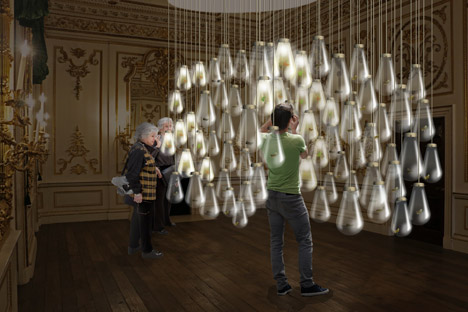
The installation called Curiosity Cloud is part of an ongoing collaboration between Viennese design duo Mischer'Traxler and Perrier-Jouët. The imitation bugs will collide with the glass, producing tapping and buzzing noises based on the proximity of the audience.
Grafton Architects will create an installation for the museum's Tapestry Gallery. Pieces of nickle, bronze and brass will be inlaid into the three-metre-tall cast-concrete fins positioned in a wall through the gallery, which are etched with the texture of tree bark.
The work takes its cues from the textures present in the tapestry's needlepoint and the linear form of an ancient Irish alphabet called Ogham.
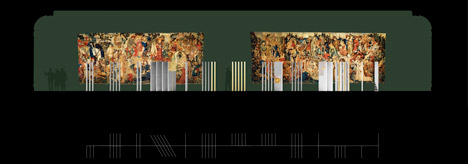
"Each letter represents an ancient tree," explained studio co-founder Shelley McNamara. "It feels very architectural, like a musical score."
The bridge linking the V&A's Medieval and Renaissance galleries will be transformed into a tiled and gridded landscape representing the perspective lines on a drawing by designers Matteo Fogale and Laetitia De Allegri. Arches of coloured transparencies will focus the eye along the gridded floor to the end of the hallway.
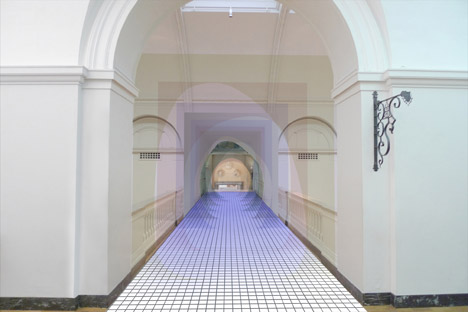
As part of a year-long celebration of Mexican culture in the UK, architect Frida Escobedo will update the V&A courtyard with reflective surfaces that mirror the overlooking architecture.
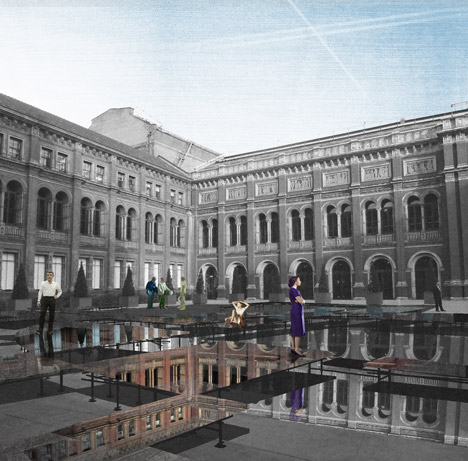
The Mexican Pavilion is based on the the Aztec city Tenochtitlan, which was built on top of a lake. This installation will open ahead of the festival at the end of May.
Installations hosted at the V&A during last year's London Design festival included a pair of giant rotating mirrors by Barber and Osgerby that reflected a set of Raphael Cartoons in one V&A gallery, a wave-shaped bridge by Zaha Hadid that rose from a pool in the museum's courtyard and a luminous spinning disk that lit the Tapestry Gallery.